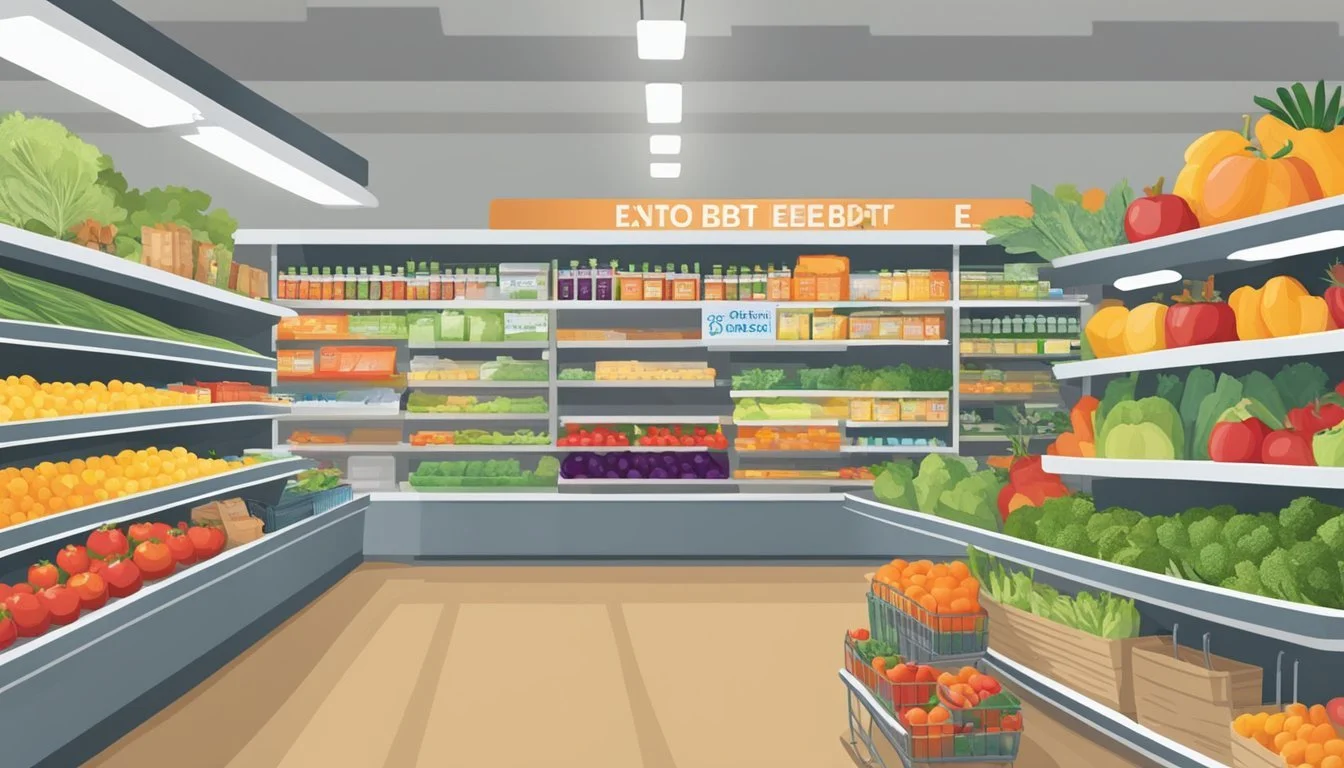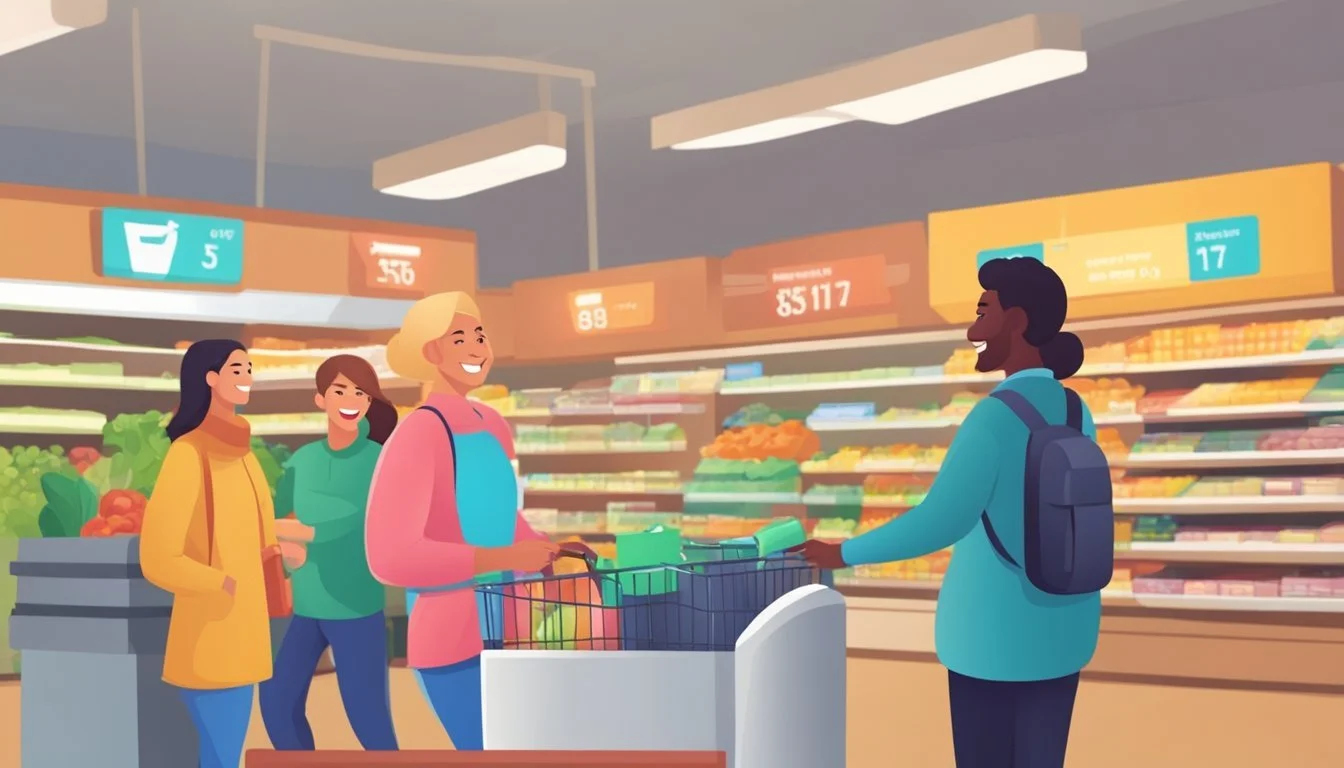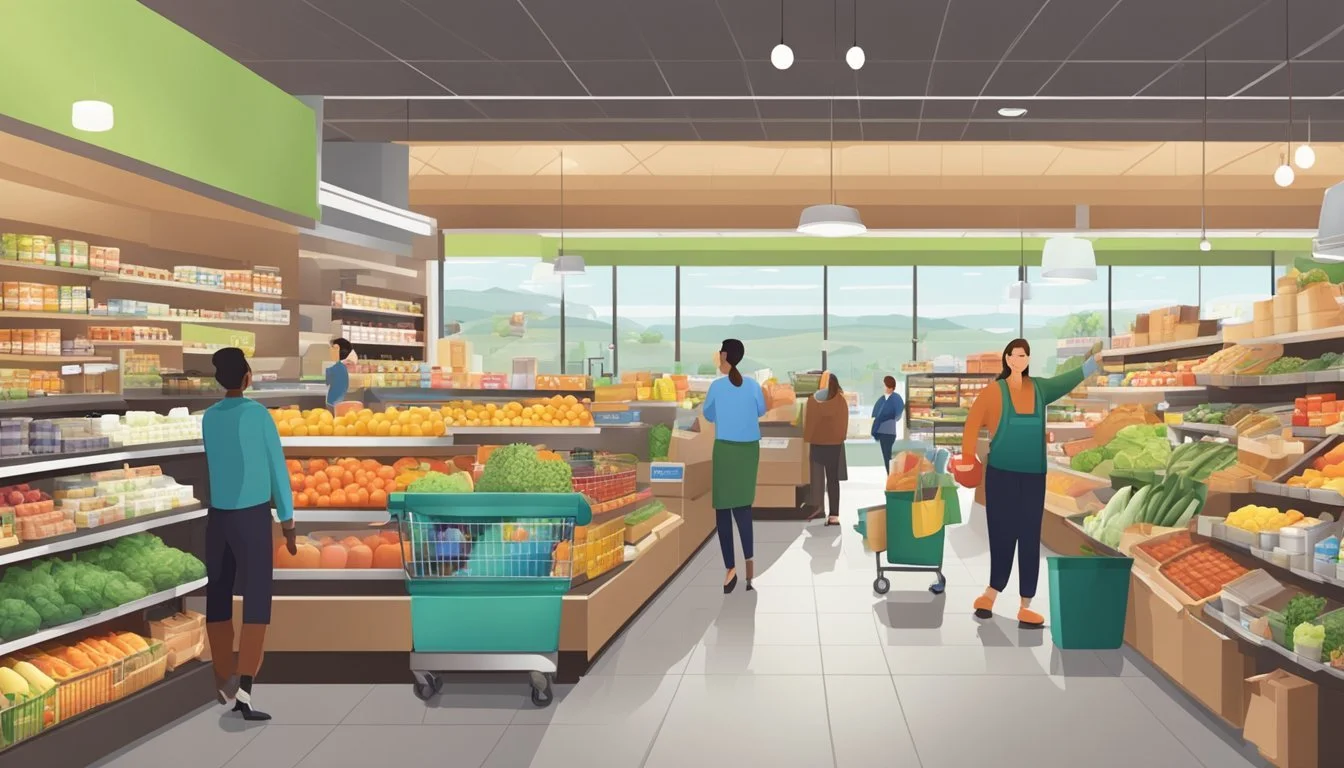Maximizing EBT Benefits: Top Grocery Stores for SNAP Recipients
Navigating the world of grocery shopping with EBT (Electronic Benefits Transfer) can be challenging. Many stores now accept SNAP (Supplemental Nutrition Assistance Program) benefits, making it easier for recipients to access nutritious food options. Walmart stands out as one of the best grocery stores for EBT users due to its wide availability, extensive product selection, and competitive prices.
EBT cardholders can use their benefits at a variety of retailers, from large supermarket chains to smaller local stores. Some popular options include Albertsons, Kroger, Costco, and Aldi. These stores offer a range of eligible items such as bread, cereal, fruits, and vegetables that can be purchased using SNAP benefits.
In recent years, many grocery stores have expanded their EBT acceptance to include online ordering and delivery services. This development has greatly improved accessibility for SNAP recipients, especially those with limited transportation options or mobility issues. Retailers like Instacart now partner with numerous stores to provide EBT-eligible grocery delivery and pickup services, further enhancing the shopping experience for SNAP beneficiaries.
Understanding EBT and SNAP
EBT and SNAP are crucial programs that provide food assistance to eligible individuals and families. These systems work together to distribute benefits and facilitate purchases at approved retailers.
What Is SNAP?
SNAP, or the Supplemental Nutrition Assistance Program, is a federal initiative designed to combat food insecurity. It offers nutrition benefits to low-income individuals and families, helping them purchase healthy food. SNAP is the largest food assistance program in the United States.
Eligibility for SNAP depends on factors like income, household size, and expenses. The program aims to support nutritional needs and promote healthier eating habits among participants. SNAP benefits can be used to buy a wide range of food items, including fruits, vegetables, meat, dairy products, and bread.
How Does EBT Work?
EBT, or Electronic Benefits Transfer, is the system used to distribute SNAP benefits. It replaces the old paper food stamp coupons with a more efficient and secure electronic method. Participants receive an EBT card, similar to a debit card, which is loaded with their monthly benefits.
To use EBT, recipients swipe their card at participating stores and enter a PIN. The system automatically deducts the purchase amount from their available balance. EBT cards can be used at various locations, including:
Grocery stores
Some online retailers
EBT transactions are quick and discreet, reducing stigma and improving the shopping experience for SNAP participants.
Identifying Eligible Stores
Finding stores that accept EBT can be straightforward with the right tools and knowledge. SNAP participants have access to a wide variety of retailers, from large supermarket chains to local grocery stores.
SNAP Retailer Locator Tool
The USDA provides a SNAP Retailer Locator tool to help beneficiaries find nearby stores that accept EBT. Users can enter their address, city, state, or zip code to locate authorized retailers in their area. The tool displays a map with participating stores and provides details such as store names, addresses, and directions.
This online resource is regularly updated and includes information on both physical stores and retailers offering online purchasing options. It's a valuable asset for SNAP participants looking to maximize their benefits and find convenient shopping locations.
Types of Participating Stores
EBT is accepted at a diverse range of retailers. Large supermarket chains like Walmart, Kroger, and Albertsons are common participants. Many smaller, independent grocery stores also accept SNAP benefits.
Specialty stores such as farmers' markets, co-ops, and ethnic food shops may participate in the program. Warehouse clubs like Costco and BJ's Wholesale Club accept EBT as well.
Some convenience stores and pharmacies like CVS also allow EBT purchases for eligible items. Dollar stores, including Dollar General, often participate in the SNAP program.
It's important to note that while many stores accept EBT, eligible items may vary. SNAP benefits typically cover staple foods like fruits, vegetables, meat, dairy, and bread.
Exploring EBT Payment Process
EBT payments provide a secure and convenient way for eligible individuals to access their benefits. The process involves using a specialized card and personal identification number to make purchases at authorized retailers.
Using Your EBT Card
EBT cards function similarly to debit cards. Recipients swipe their card at the point-of-sale terminal when making a purchase. The system verifies available funds and deducts the purchase amount from the account balance.
Authorized retailers display signs indicating they accept EBT payments. These may include grocery stores, farmers markets, and some convenience stores. Cardholders can check their balance by calling the number on the back of the card or accessing online account services.
Some retailers offer cash back on EBT purchases, subject to state regulations. This feature allows recipients to withdraw cash for non-food expenses covered by certain benefit programs.
Understanding PIN Security
PIN security is crucial for protecting EBT benefits. Recipients choose a 4-digit PIN when activating their card. This number should be kept confidential and never shared with others.
If a PIN is forgotten, cardholders can reset it by contacting their local benefits office or using automated phone systems. Some states offer online PIN change options for added convenience.
Entering an incorrect PIN multiple times may temporarily lock the card. This security measure prevents unauthorized access to benefits. In such cases, recipients should contact customer service for assistance in unlocking their account.
Regularly changing the PIN and avoiding easily guessed combinations enhances account security. EBT systems use encryption technology to protect cardholder information during transactions.
Navigating Online EBT Purchasing
Online EBT purchasing has expanded significantly in recent years, offering SNAP recipients more convenient ways to shop for groceries. The process involves pilot programs, participating retailers, and specific steps for using EBT cards online.
Pilot Programs and Expansion
The USDA launched the SNAP Online Purchasing Pilot in 2017, initially selecting eight retailers. This program has since grown to include many major grocery chains and online platforms across all 50 states and the District of Columbia.
Amazon and Walmart were early adopters, now joined by numerous other stores. The expansion allows more SNAP beneficiaries to access online grocery shopping options.
Instacart has also partnered with various retailers to facilitate EBT payments for delivery and pickup orders. This integration broadens the reach of online SNAP purchasing capabilities.
How to Shop Online with EBT
To shop online with EBT, users must first ensure their chosen retailer participates in the SNAP Online program. Many stores clearly mark EBT-eligible items on their websites or apps.
Shoppers add their EBT card as a payment method in their online account. When checking out, they can select which items to purchase with SNAP benefits.
It's important to note that EBT funds can only cover eligible food items. Delivery fees, if applicable, must be paid with an alternative payment method.
Some retailers, like Walmart, offer free pickup for online EBT orders. This option provides flexibility for those who prefer not to pay additional fees.
Eligible Food Items and Restrictions
SNAP benefits cover a wide range of food items but have specific restrictions on non-food and prepared foods. Understanding these guidelines helps EBT users maximize their benefits while adhering to program rules.
What Can You Buy with SNAP
SNAP benefits can be used to purchase a variety of food items for home preparation and consumption. Eligible items include fruits, vegetables, meat, fish, poultry, dairy products, breads, and cereals. Snack foods and non-alcoholic beverages are also allowed.
Seeds and plants that produce food for the household to eat qualify for purchase with SNAP benefits. This includes herb seeds like basil.
Many grocery stores now allow online ordering and payment with EBT cards for eligible items, increasing accessibility for SNAP recipients.
Non-Eligible Items
SNAP benefits cannot be used to buy certain items, even if sold in grocery stores. Alcoholic beverages like beer, wine, and liquor are prohibited. Tobacco products and cigarettes are also ineligible.
Non-food items such as pet food, cleaning supplies, paper products, and toiletries cannot be purchased with SNAP benefits.
Hot prepared foods and foods meant for immediate consumption are generally not eligible. This includes items from deli counters or food courts within grocery stores.
Vitamins, medicines, and supplements with "Supplement Facts" labels are excluded from SNAP eligibility, as are live animals (except shellfish and fish removed from water).
Maximizing SNAP Benefits
SNAP recipients can stretch their benefits further by strategically choosing where to shop and comparing options. Smart shopping tactics allow beneficiaries to get the most value from their EBT funds.
Finding the Best Stores for SNAP Shoppers
Aldi offers competitive prices on staple foods, making it an excellent choice for SNAP users. Their no-frills approach keeps costs low. Food Lion frequently runs sales and promotions, benefiting budget-conscious shoppers. Safeway provides a mix of store-brand and name-brand products at various price points.
ShopRite stands out for its wide selection and frequent deals. Many ShopRite locations also offer additional discounts for SNAP customers on certain days. These stores typically stock a broad range of SNAP-eligible items, from fresh produce to pantry staples.
Comparing Prices and Services
Price comparison is crucial for maximizing SNAP benefits. Many grocery stores now offer online shopping tools that allow customers to compare prices easily. Some chains, like Walmart, provide grocery pickup services at no additional cost for SNAP users.
EBT-friendly grocery delivery options are expanding. Amazon Fresh accepts EBT in select areas, potentially saving time and transportation costs. However, delivery fees may apply, reducing overall savings. Aldi partners with Instacart for delivery in many locations, though service fees are not SNAP-eligible.
It's important to weigh the convenience of delivery against potential extra costs. Shopping in-store often remains the most cost-effective option for stretching SNAP dollars.
Nationwide EBT Accepted Stores
Many grocery stores across the United States accept EBT cards for SNAP benefit purchases. These include major national chains as well as regional and local supermarkets.
Major Retailers that Accept EBT
Walmart and Target, two of the largest retailers in the country, accept EBT at their locations nationwide. Customers can use their SNAP benefits to purchase eligible food items at these stores' grocery sections.
Kroger, with its various banner stores like Food 4 Less, also accepts EBT across its locations. Albertsons, which operates under several names including Vons and Jewel-Osco, is another major chain that takes EBT payments.
Warehouse clubs like BJ's Wholesale Club and Costco allow EBT usage, though membership may be required. Whole Foods Market and Trader Joe's, known for their specialty and organic offerings, also accept SNAP benefits.
Local and Regional Chains
Many regional supermarket chains honor EBT cards. These include Giant Eagle in the Midwest, Hannaford in the Northeast, and H-E-B in Texas. Publix, a popular chain in the Southeast, accepts EBT at its stores.
Other regional retailers like Hy-Vee, Meijer, and Wegmans also participate in the SNAP program. Smaller chains such as Brookshire's, Harps Foods, and Piggly Wiggly provide EBT acceptance in their service areas.
Price Chopper, Stop & Shop, and Tops Friendly Markets are additional options for EBT users in certain regions. Local independent grocers often accept EBT as well, expanding access for SNAP beneficiaries in various communities.
State-Specific EBT Information
EBT benefits and policies vary across states, with each jurisdiction implementing unique programs and partnerships with local retailers to serve SNAP recipients.
State Variations in SNAP
SNAP benefits differ from state to state in terms of eligibility criteria, benefit amounts, and approved retailers. Alaska offers higher benefit amounts due to its higher cost of living. California's CalFresh program provides additional resources and education to recipients. New York allows SNAP benefits to be used at select restaurants for elderly, disabled, or homeless individuals.
Some states have expanded EBT use to farmers markets and local produce stands. Illinois operates the Link Up Illinois program, doubling SNAP benefits spent on fruits and vegetables at participating markets. Maryland's Farm to Food Bank Program connects local farms with food banks to provide fresh produce to SNAP recipients.
Local State Programs and Retailers
States partner with various retailers to improve access to nutritious food for SNAP recipients. Washington state collaborates with local grocery chains to offer discounts on fresh produce purchased with EBT. In D.C., the Produce Plus program provides additional funds for fruits and vegetables at farmers markets.
Guam's SNAP program includes unique provisions for cultural foods important to the island's population. Some states have pilot programs allowing online grocery ordering and delivery using EBT cards, expanding access for those with limited transportation options.
States also implement nutrition education programs alongside EBT benefits. These initiatives aim to promote healthy eating habits and maximize the nutritional value of SNAP purchases.
Conclusion
Choosing the best grocery store for EBT depends on individual needs and preferences. Many major retailers now accept EBT cards for in-store purchases and online orders.
Walmart stands out for its wide selection and competitive prices. The retailer offers both pickup and delivery options for SNAP beneficiaries in most locations.
ALDI provides budget-friendly options and accepts EBT for online orders with curbside pickup. This can be convenient for those looking to stretch their SNAP benefits.
For a more upscale experience, Whole Foods accepts EBT in-store. While prices may be higher, the retailer offers quality organic and specialty items.
Regional chains like H-E-B and Meijer also support EBT payments for various shopping methods. These stores often have loyal customer bases in their service areas.
It's important to remember that EBT cards can only be used for eligible food items under the Supplemental Nutrition Assistance Program guidelines. Non-food items require separate payment methods.
Retailers continue to expand EBT acceptance for online orders, improving accessibility for SNAP recipients. This trend helps ensure nutrition benefits reach those who need them most.









